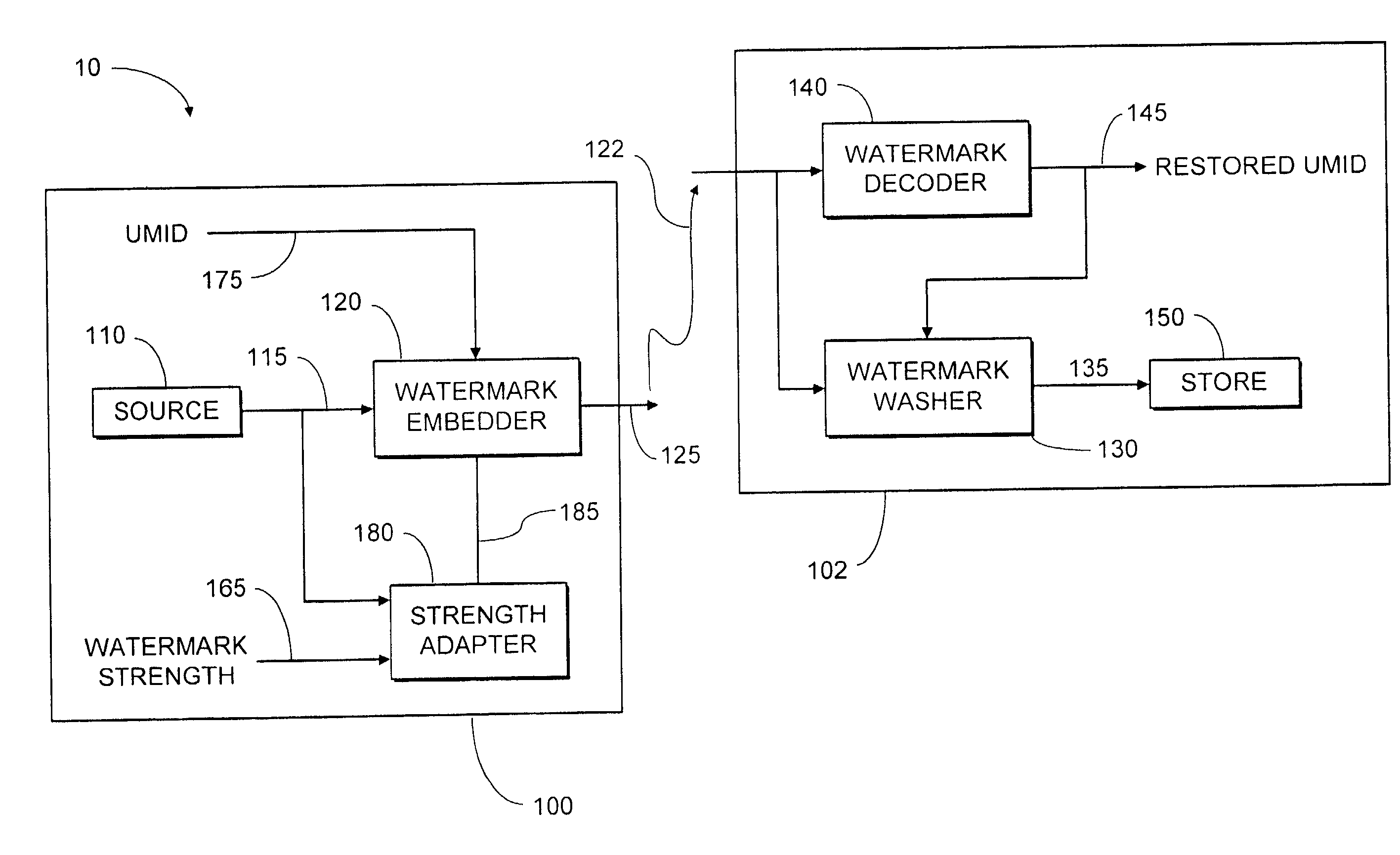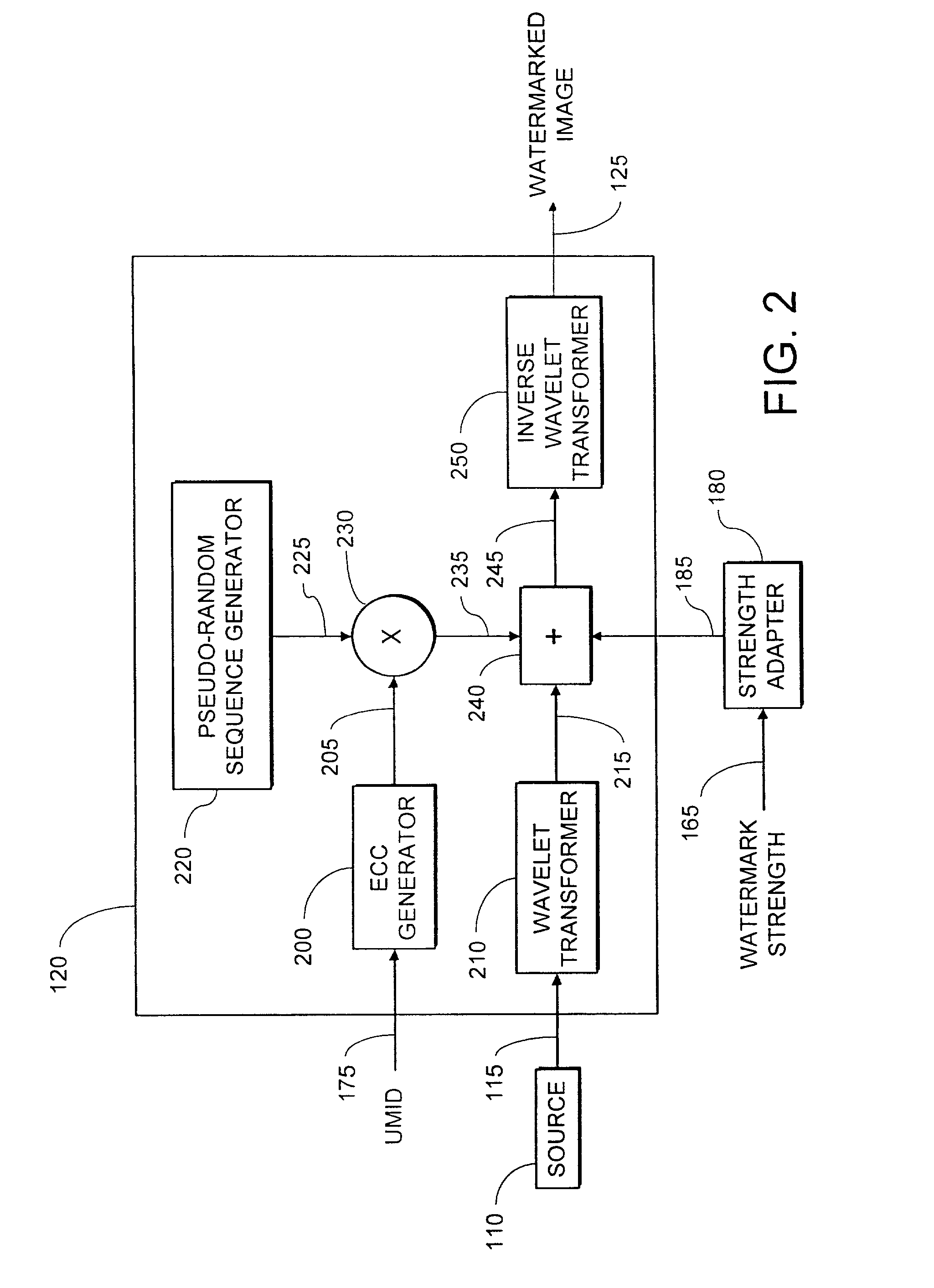Image processing apparatus
a technology of image processing and apparatus, applied in the field of embossed, can solve the problems of difficult removal of watermarks, easy damage, fragile watermarks, etc., and achieve the effects of improving detection likelihood, reducing energy consumption, and improving the likelihood of correct detection
- Summary
- Abstract
- Description
- Claims
- Application Information
AI Technical Summary
Benefits of technology
Problems solved by technology
Method used
Image
Examples
Embodiment Construction
[0024] An example embodiment of the present invention will be described with reference to a watermarking system in which data is embedded into a video image. Any type of data can be embedded into the image. However, advantageously the data embedded into the image may be meta data which describes the image or identifies some attributes of the content of the image itself. An example of meta data is the Universal Material Identifier (UMID). A proposed structure for the UMID is disclosed in SMPTE Journal March 2000. A more detailed explanation of the structure of the UMID will be described later.
[0025] Watermarking System
[0026] FIG. 1 illustrates a watermarking system, generally 10, for embedding a watermark into a video image 115, and recovering and removing a watermark from the video image 115. The watermarking system 10 in FIG. 1 comprises an image processor 100 for embedding the watermark into the video image, and a decoding image processor 102 for detecting and recovering the water...
PUM
 Login to View More
Login to View More Abstract
Description
Claims
Application Information
 Login to View More
Login to View More - R&D
- Intellectual Property
- Life Sciences
- Materials
- Tech Scout
- Unparalleled Data Quality
- Higher Quality Content
- 60% Fewer Hallucinations
Browse by: Latest US Patents, China's latest patents, Technical Efficacy Thesaurus, Application Domain, Technology Topic, Popular Technical Reports.
© 2025 PatSnap. All rights reserved.Legal|Privacy policy|Modern Slavery Act Transparency Statement|Sitemap|About US| Contact US: help@patsnap.com



